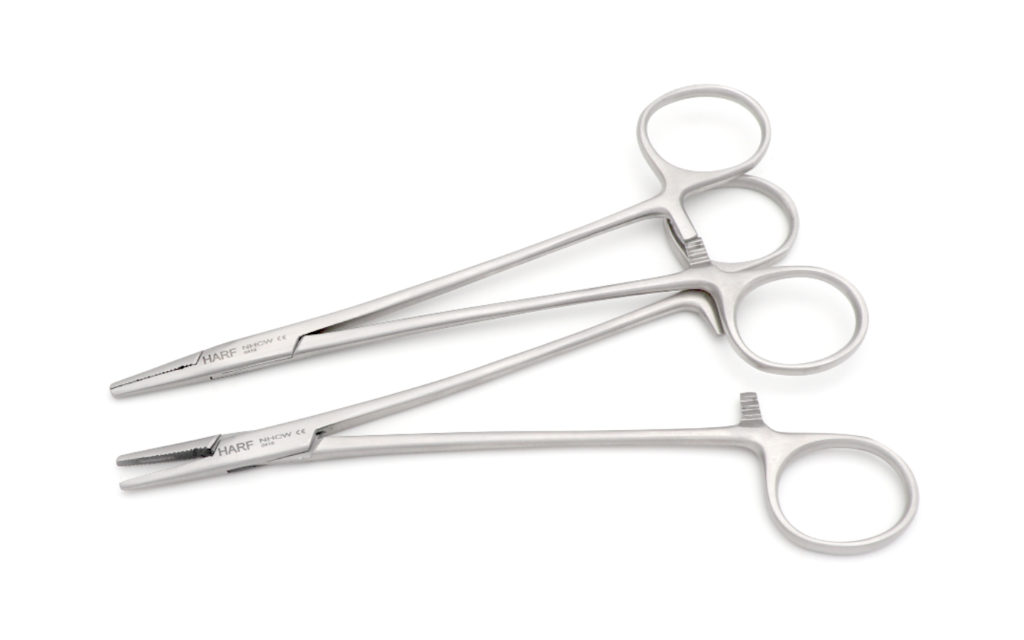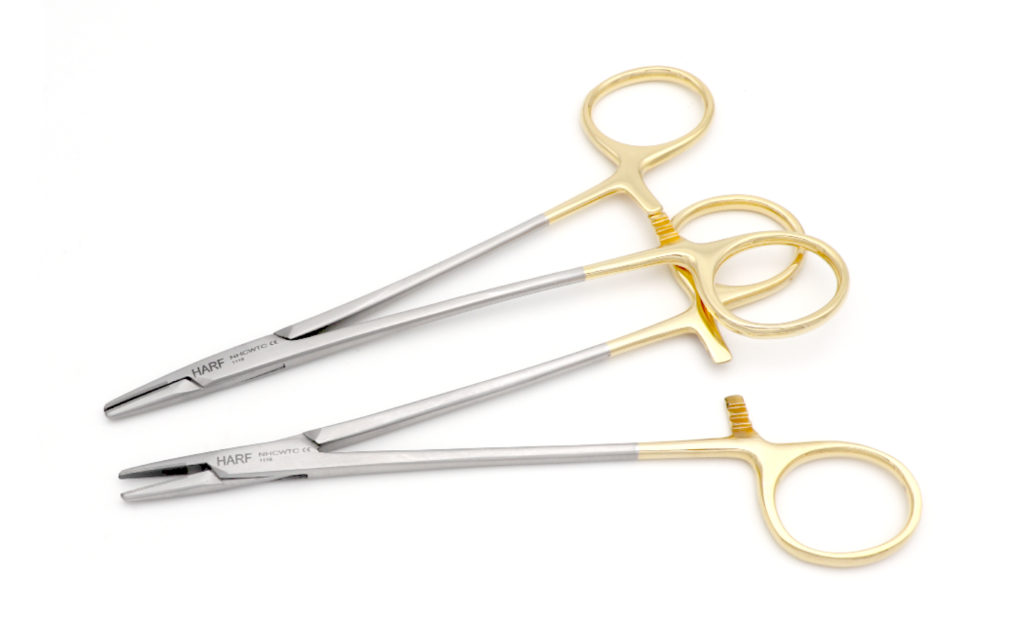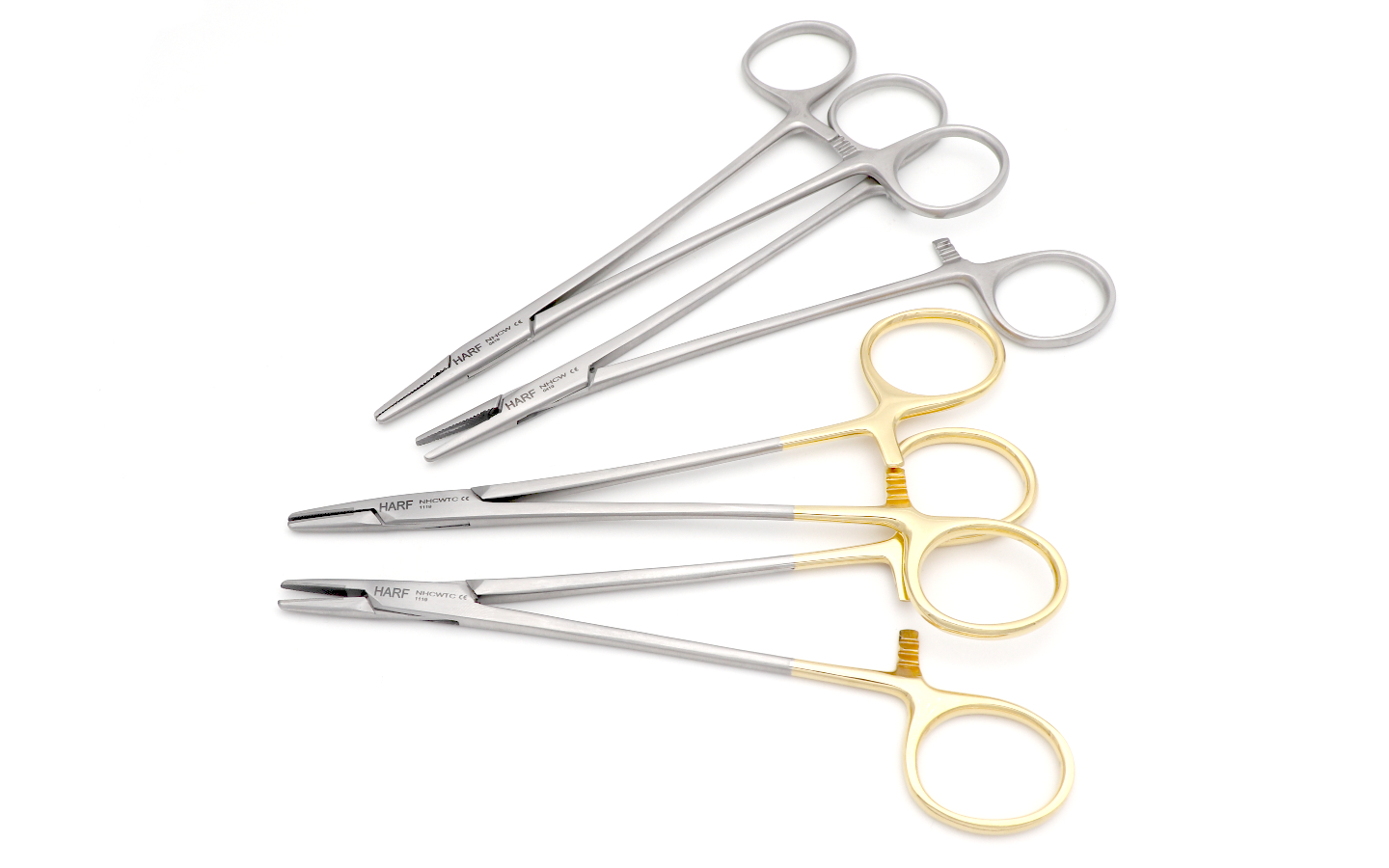Crile-Wood Needle Holders are used to grasp and guide the needle when suturing. Crile-Wood needle holders are similar to Mayo-Hegar needle holder but the end tip is finer and gently tapered. These needle holders are available with fine cross serrated jaws and with tungsten carbide inserted tips.
Crile-Wood Needle Holder with Cross Serrated Jaws:

Crile-Wood Needle Holder with Tungsten Carbide Inserts:

The Tungsten Carbide inserts/beaks, promotes longevity and corrosion resistance. The thumb rings are gold color coated, to indicate that the jaws are fitted with Tungsten Carbide inserts.
Crile-Wood needle holder is the most commonly used need holder for general surgical procedures, with 3-0,4-0,5-0, 6-0 sutures. Handcrafted from surgical grade German stainless steel. It is available in various lengths, 15cm, 18cm and 20cm. The customize lengths and tip sizes are also available on demand. Light weight and well-balanced surgical needle holder have the maximum cutting strength in all types of soft tissues.
Technical Specifications of Crile-Wood needle holders:
- Total length of instrument is 15cm
- Working end tip width is 2mm
- Available with Serrated jaws & TC inserts
- Recommended for general use with 3-0,4-0,5-0, 6-0 sutures
- Surgical stainless-steel material
- Completely sterilizable
- Satin Steel Finishing
- Left-Hand or Right-Hand usage
- Boil Tested, Performance Tested, Shape Tested
Maintenance and Reprocessing:
Please find here the key instructions and explanations to avoid damage caused by most common errors in the re-processing / hygiene chain errors.
Instruments Break on Tips/Joints:
All instruments need to be treated carefully. Do not throw them down or let them fall. Drops and mechanical stress due to impacts with other instruments may lead to cracks. Particularly carbide inserts are very brittle and are very vulnerable for breaks by falls. Please be sure you are using the right needle / thread size (type), which is recommended by the company for each kind of forcep. All joint instruments need to be cleaned and sterilized in open position. This is particularly important for forceps or needle holders. When closed, the instrument tips are under contact pressure. Due to heating in the WD and during sterilization, the steel expands and the contact pressure on the instrument tip increases. This cannot occur in open position. With forceps a preparation in closed position can lead to stress cracking. In the beginning these cracks can absolutely be in the small region, so that the final instruments break arises later, e.g. under stress. Chlorides in varying concentrations in each drinking and mains water cannot be eliminated completely by a demineralization process of drinking water. While drying, chlorides focus punctually on the surface and cause pitting corrosion. To avoid this, the final rinse should be made with deionized water. These small corrosion holes, especially at the tips, inevitably lead.
Corrosion on Joints:
If you ask about the meaning of terms such as stainless steel, it is often assumed that stainless steel is an indestructible, extremely durable material. The corrosion resistance of “STAINLESS STEEL” is based on the fact that they form passive layers on their sur-face, protecting the steel. Due to external influences, these protective passive layers can be destroyed, and this will lead to defects on the instruments. (see sterilization guide for more details or contact us directly).
For any further question about our products and services, please write us email at contact@harfins.com

